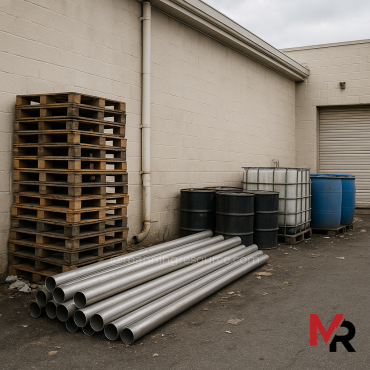In a well-run facility, floors do more than support your operations, they reflect them. A floor in good repair isn’t just about appearances; it signals a culture of safety, accountability, and operational discipline.
Here’s why floors and drains should always be a top priority:
- Cleanability & Sanitation
Damaged floors create harborage points, perfect for pathogens, mold, and insects. Cracks, holes, and missing grout are nearly impossible to clean and sanitize effectively. Smooth, intact floors allow for quick, consistent sanitation without blind spots or buildup zones.
- Employee Safety
Unsafe floors are responsible for two of the top workplace injury categories:
- Slips, trips, and falls from broken, missing, or uneven tiles.
- Strains and sprains from employees forcing carts or pallet jacks over raised or damaged surfaces, causing overexertion and muscle injuries.
In both cases, poor flooring leads to preventable injuries—and preventable costs.
- Drainage & Drain Design
A good floor has to drain well. Drains should be made from proper materials, be crack-free, and have tightly fitting covers. Improperly maintained drains can back up, pit, or leak—introducing both microbial and physical risks. Always ensure drains are free-flowing and can be cleaned effectively.
- Inspect Floor Penetrations, Wet Zones & Heat-Exposed Areas
Don’t ignore floor penetrations, floor-wall junctions, and areas with continuous water exposure (like near sinks, CIP return points, or thermal processor discharge pipes). These areas often degrade faster, cracking, lifting, or allowing moisture intrusion that accelerates damage.
- Grout & Floor Covering Failures
No matter how good your flooring system is, grout and coatings (like epoxy) require maintenance. Epoxy and similar coverings will peel, crack, or bubble over time, especially in wet or traffic-heavy areas. Continuous spot repairs may indicate it’s time to resurface or redesign, not just patch. Failing to address this early opens the door to bigger microbial risks and employee hazards.
- Facility Image & Culture
Auditors, customers, and visitors notice floors immediately. Damaged or dirty floors reflect poor attention to detail, while well-maintained floors signal strong leadership and operational discipline. A clean floor = a clean culture.
What can you do today?
- Include floors and drains in every facility inspection checklist
- Prioritize them for repairs and in CAPEX planning
- Audit not just the surfaces—but the coatings, transitions, penetrations, and drains
- Train teams to report early signs of wear, not just major failures
If you’re serious about food safety, employee safety, and operational excellence, start from the ground up.




Add Comment